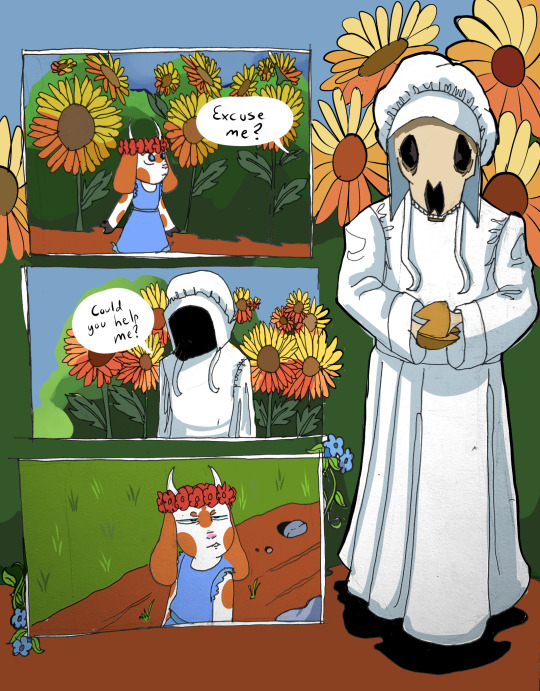#goathead
Explore tagged Tumblr posts
Text
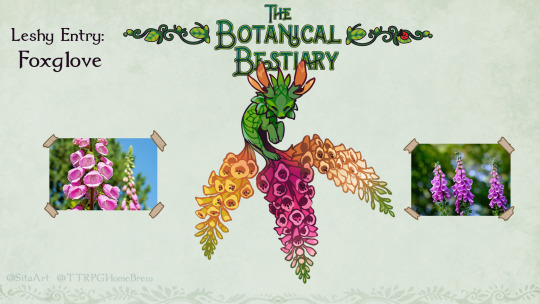

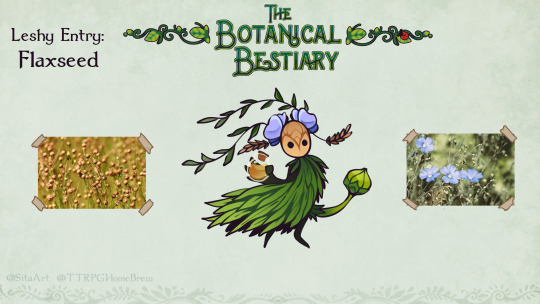
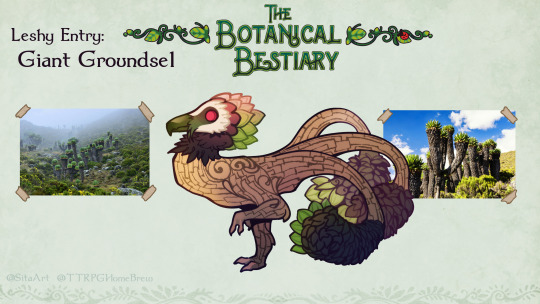
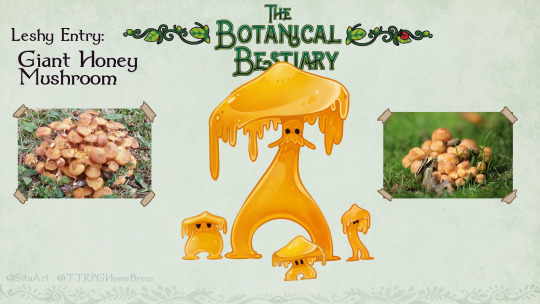
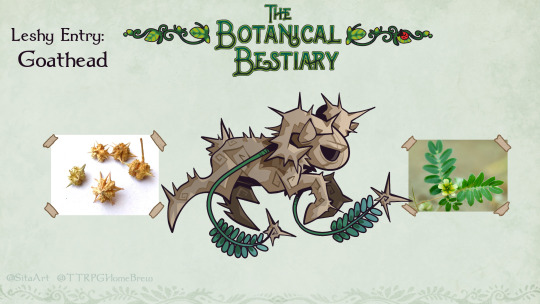
The Botanical Bestiary is a project I had the honor of being the artist for. It's a bunch of leshy miscreants who will try to destroy you, or possibly be adopted into your party as family. It's a bit of a toss up
The Botanical Bestiary is for Pathfinder 2e and D&D 5e. It contains:
65 leshy monsters
10 leshy heritages You can find it on DriveThruRPG here
#leshy#sita duncan#art#cute art#artists on tumblr#female artists#illustration#giant honey mushroom#goathead#giant groundsel#flame lily#flaxseed#foxglove
278 notes
·
View notes
Text

jj peterka | det @ buf | 26 october
22 notes
·
View notes
Text
Music Is Like Sushi
Pop music is the rice. Bland and basic, little to no actual nutritional value, mostly empty calories and filler carbs, but hey, you need something neutral and plain to serve as a vessel to deliver everything else!
Indie is like the sesame seeds. Mild, sure, but still more flavorful, textured, and nuanced than the rice. Just a little sprinkle for toasty nuttiness will do.
Metal is like the raw fish. An acquired taste, for sure. You might not like it the first few times you try it. But if you keep an open mind, it can become one of your favorite things in the world! And of course, it is the very heart and soul of a proper sushi dish. I really do listen to every genre, from electroswing to dreampop to shoegaze to grindcore. But if I'm honest with myself, 75 -90% of my favorite songs are some variation of heavy metal.
Wasabi is like punk. A kick in the nostrils that makes you say "Oi!" Sure, the modern stuff you find in America is probably mass produced, watered down, and not necessarily authentic. But even when it's bad, it's still pretty good.
Soul, funk, and Motown are like the pickled ginger. Spicy, but not as much as the wasabi. Sweet, but subtly so. Despite the extremity, it actually serves as a palate cleanser, to neutralize the tastebuds between intense bites. Ginger physically soothes the stomach, just like soul music physically soothes ... Well, the soul!
The nori seaweed is the rap. Get it? Wrap? I'm so clever! Just like the witty wordplay and double entendres of hip hop lyrics.
Soy sauce is deliciously addictive, just like rock music in general. It goes with everything! I'd drink it straight out of the bottle if I could. Speaking of which...
Sake is classical music. Refined, classy, sophisticated. Yet, for some reason, I don't partake very often. I usually reserve it just for special occasions. But when I do indulge in it, it's so wonderfully decadent, I wonder why I don't do it more frequently!
Beer, like Sapporo or Kirin Ichiban, is folk music. From tavern songs to sea shanties to bluegrass, almost every nation or culture has some sort of variety of such.
Whiskey, such as Hibiki, is country music. A little bit goes a long way. You just need a quick swig every now and then. But don't overdo it, or you'll ruin it for yourself.
#undead#goathead#metal#metalhead#heavymetal#sushi#rocknroll#pop punk#punk rock#punk#classical#music#indie rock#folk music#hiphop#rap#country
2 notes
·
View notes
Text
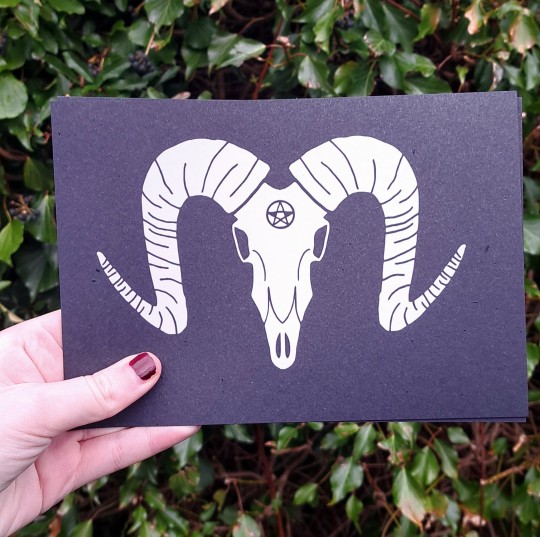
Coming to my etsy store v soon ❤️❤️
0 notes
Text
Skull candy
It was early Autumn, which In Southern Oklahoma just means summer. I was rummaging through an abandoned house with a friend of mine. I had been in there for several hours as the house was full of cool relics. Suddenly I heard my friend shout " Bro! We gotta get tf outta here!"
The look on his face was pure horror which sparked my interest, so I replied " why, what happened?"
"Dude there is a fucking human skull in here."
"What?!? Where, lemme see it!" I replied. He pointed to the corner of the room without looking in that direction while maintaining a perfect 'stink face'. I made my way to the corner and located the skull. It was in a pot with a goat skull. I knew immediately it was real and I was ecstatic! Fast forward.
The same friend that was so disturbed upon finding the skull had no idea what was in store for him. He made a huge mistake letting me know how much it bothered him. I took the skull home, obviously, and the next time he came over, I was cleaning it and cheerfully informed him that I had decided to name it Fred. " I wish you would get rid of that thing man." He said. He didn't stay long.
Now, when I found Fred, the top of his skull had been cut off. I began to come up with a variety of theories as to why which I enthusiastically shared with my friend every chance I got.
" Maybe he was an Egyptian and they mummified him alive and cut off his skull to remove his brain for preservation. Or maybe he ran into Hannibal and he paralyzed him and cut off his skull so he could eat his brain like in the movie." It went on an on.
I posted Fred for sale online and when I informed my friend he replied, " Bro, that's so fucked." I laughed at the sincerity.
Let me get to the part where it all came to..... a head. (Little skull pun for ya) he didn't like the skull puns) He showed up one day a month or so later. I figured it was enough time for him to forget the comment I made about eating cereal out of the skull. He knocked on my shop door and I hollard for him to come in. The first thing he saw was me sitting in a fishing chair, Fred in my lap, full of Halloween candy chomping happily on a tootsie roll. It was his shortest visit. "Bro what the fuck, I'm outta here." And just like that, he was gone. I called him a week later to inform him I'd sold Fred. I needed to know if he could come help me package him for shipping. Needless to say, he was busy. :)
Much love, thanks for reading!
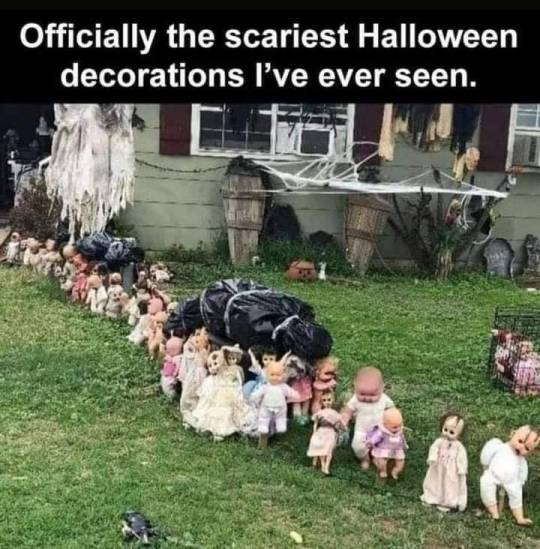
#halloween#scary#boo#ghost#skull#god#art#life#tragic comedy#story#money#Sasquatch#Bigfoot#candy#goathead#monster#pumpkin#trickortreat#fall#costume#candycorn#vampire#werewolf#mummy#cult#devil#goblin#gremlin#scarecrow
0 notes
Text

hot girl 4 hot girl !
#BACKWARDS GOATHEAD CAP FOR MEEEEEEEEEEEEE#THIS WIN JUST KEEPS GIVING#jack quinn#ukko pekka luukkonen#sabres
34 notes
·
View notes
Text
SOMEWHERE YOU DID, SOMEWHERE YOU WILL: Bird Friend's Our Gods at 10; or, Last Thoughts on the Albuquerque House Show Scene

Author’s note:
Okay - bear with me on this one. Ten years have passed since the events in this piece occurred. In those ten years I’d like to think I’ve picked up a few scraps of wisdom here and there, and while our culture has built an industry around depictions of untamed youth, I’m inclined to believe that those years aren’t always what they’re cracked up to be. I was far from perfect as a young man, and this memoir is not designed to suggest any differently. It is, however, partly an attempt to express gratitude towards those folks who gave me the opportunity to live something like the rich life of an artist. If this work has found its way to you, I will say this: my inbox is always open.
G. Himsel
Funeral Hill, Portsmouth, New Hampshire
Autumn 2024
I.
Halfway through the last-ever show at the old Vassar house, someone called the cops.
Cheap Time was playing in the living room when the police banged on the door, and when the hostess took over the mic to warn the crowd, the whole place fell apart. The music shambled to a halt, and the living room - which was painted floor-to-ceiling in graffiti - became the scene of a mad scramble for the exits. Young punks spilled into the backyard, clambering over the cinderblock walls and into the alleyways, or sprinting drunkenly past the squad cars blocking the driveways. Underage kids tossed bottles and dime bags onto the neighbors’ side of the fence before disappearing into the darkness themselves. The band stood around, dumbfounded, as the room cleared, their audience disappeared, and a pair of tired-looking cops wandered into the house with their hands on their hips. The night was over, prematurely - and while the old house’s closing ceremonies were supposed to have some sort of significance, the chaos of the evening was befitting of the chaos of its era. The street was full of wasted kids, running from the cop lights. With three beers in my body, I ran, too - into the cool bronze night of the neighborhood, past the bungalows and pueblo revivals, holding my half-empty pack of cigarettes in the breast pocket of my flannel shirt. It was the fall of 2013 in Albuquerque, New Mexico, I was nineteen years old, and it was the first house show I’d ever attended.
II.

Albuquerque is about a day’s drive from anything; eight hours east of Las Vegas, seven hours out from Phoenix. Denver lies six miles to the north, and Mexico five hours south. The city rests on a massive alluvial plain and straddles the Rio Grande at its midpoint, where droughts and water-rights battles often reduce the river to a trickle. It’s bright: the sun shines four out of every five days, and at a mile above sea level, the sun can feel intimately close. Isolated by miles of Southwestern desert, it’s nonetheless a city of intersections - intersections of North American cultures, of rivers and railroads, and of highways. I-40 and I-25 collide here at the “Big I,” an engineering feat that doubles as a towering monument to the car culture of the American West. Nearly thirty percent of residents speak Spanish, and another significant portion speaks Navajo or Vietnamese. In the last hundred and fifty years, it’s grown from a railroad depot to nearly two-hundred miles of low-density urban sprawl - and many parts retain an odd 1960s or ‘70s feel. Outside of the city, they make movies and television, and test weapons for the military. Passenger trains still clatter through downtown, and bands play under gazebos in the historic district. In Barelas, Chicano pride shines. In Rio Rancho, suburban tract homes bump up against the stark, high desert. But while the city glows with a sort of mid-century American-ness, it more often feels far, far away from the mainstream culture and customs of the rest of the U.S. It’s a weird place, especially if you - like me - grew up amidst the urban renewal and suburban gloom of post-industrial New England. Out in New Mexico, you sort of get the feeling that you’ve traveled off the map.

I lived in Albuquerque from 2012 to 2016. I wanted to make art and play my guitar, and I got my wish; I spent most of those years submerged in the city’s weird subculture of underground house shows. Our neighborhood of University Heights - more generally known as the Student Ghetto, due to its huge population of off-campus UNM students - was the kind of starving-artist paradise peculiar to college towns. The neighborhood was made up of cheap, low-density rental housing. Landlords and neighbors were generally tolerant of the 18-25 crowd and whatever noise and chaos it generated. Homes were usually single-unit, with spacious yards and a sense of relative privacy. Rents were in the high hundreds, and we often had more space than we needed. The infrastructure supported public transit and cyclists and the whole area was anchored by a commercial strip with cheap food and plenty of intellectual resources.
But while while the Student Ghetto was typical of any neighborhood near a big college campus, the fact that the college campus happened to be located right in the middle of a major city - a city that, in turn, was an isolated stop on the way to the rest of the world - meant that a disproportionate amount of creative energy was funneled directly into the laps of the people living there. In 2014-15 a five-block stretch of Gold Avenue alone boasted five house venues, each with distinct programming, that sometimes threw shows on the same nights. The most important of them, Gold House, changed hands countless times but survived for over a decade as a magnet for nationally-recognized punk and indie acts. I saw Kid Congo play at Gold House, in the living room; I saw Kimya Dawson play on the porch. The loudest show I’ve ever seen in my life was at Gold House: the Cosmonauts blew my eardrums there, on a Sunday night in the summer of 2014.
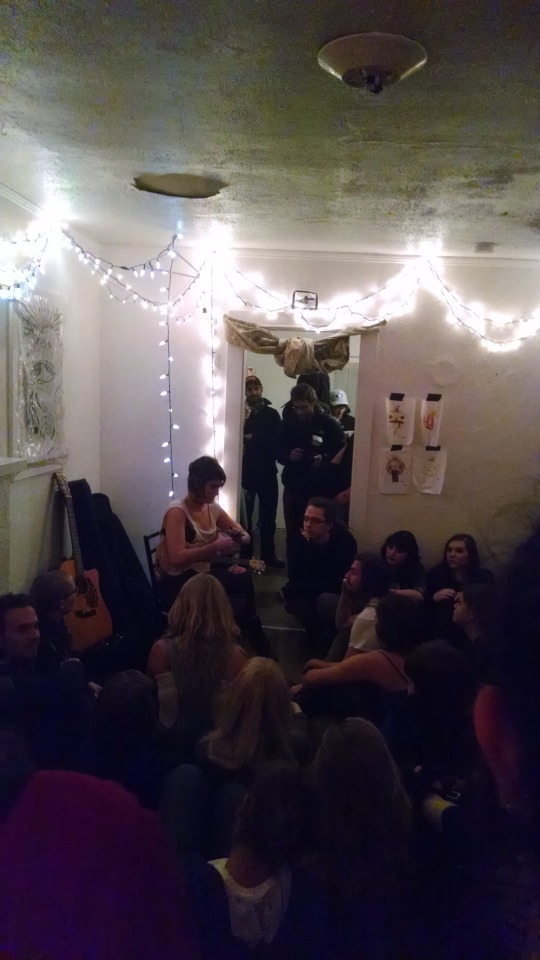
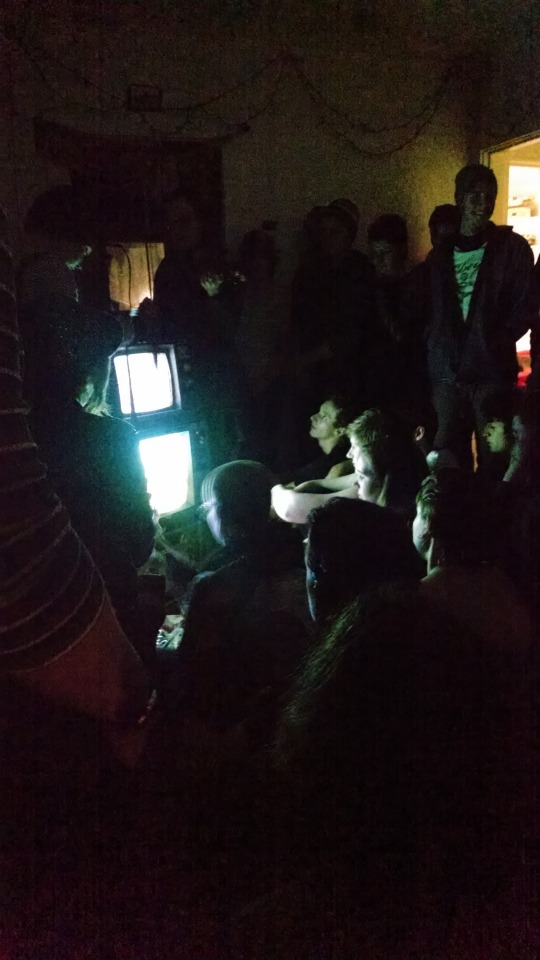
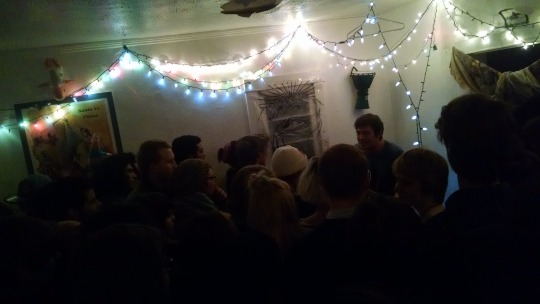
A culture existed around these places. Different houses were home to different sub-families of the city’s greater punk community, and often had one or two of their own house bands in addition to a few touring favorites. My immediate neighbors hosted murky, reverb-washed psych rock bands like L.A. Witch, while the legendary Bungalow was something like a fraternal organization for strange, outer-limits outsider punk.
Beyond that, different houses had different philosophies about live music, different levels of permissiveness surrounding drugs and drinking, and varying levels of preparedness for interactions with the police. At some venues, “rules” were looked upon suspiciously. At one Fourth of July show in 2015, the entertainment options were split between outdoor American flag-burning and a basement set by a band that played completely naked. But there were more often attempts to establish some order. At the Bungalow, there was generally a volunteer at the door who checked IDs and marked hands accordingly; this protected the house and its inhabitants when the cops were called, as they were during the second Mountain Blood Fest when one hardcore punk vocalist ended up on the roof.

My Albuquerque experience eventually reached its zenith at the Bungalow, where Bird Friend recorded Cibola and I probably attended more shows than anywhere else, but it was Wagon Wheel - a miniscule pueblo house on Stanford Drive - where I first found my footing as a writer and musician.
III.
Wagon Wheel’s house band was Arroyo Deathmatch, an insane hardcore/folk-punk band that played a weird assemblage of uncommon and handmade instruments and acted as the essential masthead for the local Goathead Record Collective. Besides being the band that I most closely identify with this space, they were the first group I encountered in the Southwest who really completely embodied a DIY ethic. A lot of people coming into music feel as if they need to gather a certain amount of abstract necessities in order to reach a performance level - things like promotional materials, or a clear idea of genre, style, influence, etc. These guys didn’t even need proper instruments. They played a kind of shambling punk on a frankenstein lineup of homemade drums, bass guitars, flutes and ukuleles that was nonetheless really literary and challenging and rousingly political. They hand-printed their own CD jackets, did all their own distribution, and created their own music network before Spotify was a thing and when social media as we now know it was in its infancy.

The first time I caught them was at Wagon Wheel, on their own turf - in the sweaty, postage-stamp sized living room that felt like it was ready to burst with bodies dancing, jumping, singing along. I have no idea how long they had been a band before I encountered them, but the scene that I wandered into felt completely fully-formed by the time I arrived. Folks knew the words to their songs, knew the breaks, wore the fashion and participated fully in the music. The audience was committed to this local band in a way that I had never considered, let alone encountered, in the fragile, decentralized, conservative and suburban music community back home in New England.
Seeing Arroyo Deathmatch for the first time completely reordered my idea of what was possible as a performer - instead of meeting the expectations of an entrenched music scene, as most fledgling musicians attempt to do, they created their own scene, with its own internal logic and set of rules. Obviously this wasn’t the first time this had ever happened in punk history, but to see it happening on such a grassroots level - and with an audience that was so ready to be a part of their thing - was incalculably influential on my soft, teenage brain. I sent them an email, asking how to be a part of that thing, and they set me up with my first show in town. It was the first Bird Friend show - a last-minute addition to the opening ceremonies of the first-ever Mountain Blood Fest. I banged my way through six or seven solo songs, completely unamplified, met our lifelong friend and collaborator Nikki Barva, and was at a Goathead Collective meeting two weeks later.

IV.
Goathead Record Collective was an non-hierarchical affiliation of artists and musicians that organized gear shares, music promotion, and operated a sort of mobile recording studio whose equipment was free to use amongst collective members. They organized a weekly meeting - on Wednesday nights - where participants drew up show schedules and local promo stuff and organized workshops on everything from tour booking and zine-making to discussions about scene politics and self-policing. The location rotated, sometimes taking place at the Bungalow, sometimes at my own place, Coffee House, and most often at Wagon Wheel. A ton of stuff came out of the GRC: an organized network of merch sales, three iterations of Mountain Blood Fest, countless shows at venues ranging from living rooms to warehouses, clubs, and karate studios. That’s not to mention the recorded output: GRC was involved in early releases by bands like Days ‘N’ Daze, and a distinguished list of Albuquerque artists like the Leaky Faces, Manuka Piglet, the Vassar Bastards, and Arroyo Deathmatch themselves. Using the DIY studio setup and a refurbished 10-CD duplicator from the flea market, the collective did hand-made CD releases and promoted them in local newspapers.
If it sounds utopic, it was - and the collective disbanded after a few years. But when I stumbled into it, it was in its halcyon days. At Wagon Wheel and the other houses it felt as though there was an endless parade of bands who, although now fading into history, left a permanent impression on us. Far from the cultural centers of the country, and far even from the curated, “professional” music community of Albuquerque, the weirdest bands in the world summoned magic, effortlessly, night after night. These houses glowed with creative energy, and the more music they contained, the more their myths assumed legendary proportions.
V.
I hoped that some of that magic would rub off when Alexster, of Arroyo Deathmatch, invited Bird Friend to record an album at Wagon Wheel. Our band was - as it’s always been - a pretty loose unit. I had one record out already, a self-titled release that I’d cobbled together with my high school band. It was a gloomy, navel-gazing collection of bummers and breakup songs that nevertheless featured “Parting Gifts,” a song that’d soon become a singalong staple of our years in Albuquerque. I’d been playing solo shows in the city for about six months, and had recruited Cody and Peach of the Leaky Faces to play with me when they were available. My then-roomate (now wife) Carson would sit in on harmony vocals every now and then.
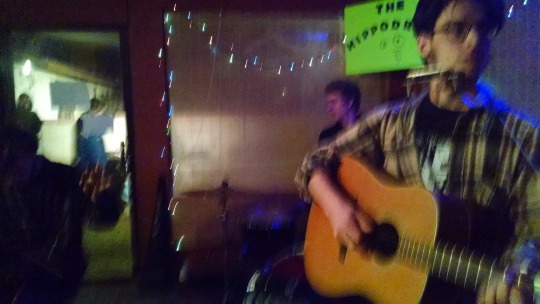
I booked a weekend at Wagon Wheel to bang out some songs I’d been working on; I’d recently read Hesiod’s Theogony & Works and Days and some of Edith Hamilton’s classic Mythology and become really interested in the weird, flawed gods and heroes of ancient Greece. I was a young dude, very far from home and trying to figure things out pretty much completely on my own; I was very aware that I was going through a transitional period, twenty years old and particularly susceptible to self-mythologizing. I began to think of myself as entering a new epoch of my life, and through my involvement in the Collective and the music community I felt as if I were making a full break from the expectations and orthodoxies of my “old life��� in New England. It became very important to me to write down what I was seeing unfold all around me.
Reading the ancient stories - which really feel so contemporary at times - pushed me to mythologize what I was living through. The writers, artists, strangers and cities of the Southwest lived on one hand, with the folks I left back in New England on the other. I started to try and fit them into the contours of very, very old stories. I may have been trying to make some sense of the weird new world I found myself in. But I was more certainly writing to my older self; caught in that present utopia, I had the bright idea to create a sort of Myth of Ages that would elevate that fleeting moment to the status of folklore. After all, the excitement of the music community back then felt so much bigger than the sum of its parts. If this radical moment of mass self-actualization was, in its essence, just a bunch of people hanging out in living rooms, it felt huge, important, essential. That meant the only way to write about it was mythologically.
Once again, it’s not like this idea was itself a radical development. Storytelling and tall tales are as old as anything in the folk tradition. But if Bird Friend’s love for the folk tradition has often pitted us against the prevailing currents of popular music, it was - in this instant - the most appropriate vessel.

We only had two days to record the material that would become Our Gods. Some elements of my music life never change, and the matter of scheduling is one of them. Alexster had a day job, a venue to run, and other groups to record; Cody had his other band, Carson was still in school, and I worked nights at the 66 Diner. Peach, who at that point had already played shows with us, may have been out of town or otherwise occupied, and didn’t get to join us at all. As it were, we had two days back-to-back in mid-October to crank out whatever songs we could. We planned a double release with the Leaky Faces in December, so the feeling was that whatever we committed to tape that weekend would pretty much be the album. The “the studio” was set up in the empty living room, and was limited to two microphones and a dining room chair. Alexster’s bedroom served as the control booth.
VI.
A few days before the release, the Collective got together in the basement of the Bungalow, and we had a CD-making party for Our Gods and the Leaky Faces’ Freak Tree. We burned blank discs ten at a time on the duplicator, and cut album covers that we’d printed for free with someone’s UNM library card. We did some beers and carefully glued the covers onto plain black CD jackets, each one stamped with the Goathead Records logo. It was December, and it was cold; in photos from that night, everyone’s wearing jackets and sweaters indoors. I wonder now if the heat was on, or if it was ever on in that house.
We did the show at Wagon Wheel a few nights later - something like eight bands played, and our resident videographer Isaac “Boose” Vallejos got the whole evening on film. That night was Wagon Wheel as I remember it: packed, sweaty, and electric with creative energy. In those days, getting a show at all felt like a blessing - every single performance felt vital, essential, and to attach a whole album to it felt triumphant. I have the videos of the Bird Friend set, and we’re loose, sloppy, full of humor, and backed against the wall by a big crowd of happy people.

The Goathead thing began to splinter apart a few months after Our Gods. Social friction amidst the growing proportions of the scene, not to mention the exhausting undertaking of Mountain Blood Fest II, contributed to a slow drift towards other projects. The atmosphere of idealism was hard to sustain as more people joined the fold, and the collective itself felt more beholden to a sense of expectation and accountability that quickly overwhelmed it.
It was tough to let it all go. It’s not like the shows and the bands simply vanished, but a growing sense of dislocation and disunity began to take over. The essential loss of a mutual support network returned the music scene back to a landscape of unfocused cliques. At this point, I was 21 years old, totally untethered and spinning my wheels. I started drinking a lot, and entered a dark stretch, turning out songs that were long, desperate, and heavy with a sense of doom. I fell down for a while. Eventually I left Albuquerque, in order to hit the reset button before I went too far down an ugly path.
A friend of mine once said that writing is a selfish act. Before he passed away, I often thought about asking him what he meant - and now that I don’t have the chance, I meditate on it often. And writing down these memories so long after the fact, I find myself meditating on it all over again. Maybe it’s selfish to attach too much significance to this brief period of my life. Or maybe it’s selfish to view something that touched so many people through the narrow window of my own, meager experience. After all, the world of New Mexican music was so much bigger than the record collective. Or perhaps it’s selfish to talk about those days like they belonged to some perfect, unspoiled era; for they most certainly did not. All of this history took place against the confused, chaotic backdrop of about a thousand peoples’ early twenties - not generally known as a peaceful or self-assured time in life. Not everyone got out in one piece, or even alive.
Yet I’ve been playing my guitar in front of people for a long time now, and Bird Friend has been around in some form for over a decade. And though I’ve started to suspect that we’re not going to be famous (not that that’s the point), in navigating a whole range of music scenes I’ve started to double back to the questions leftover from the days of Goathead. How do we celebrate each other, and our art? How do we inhabit the role of audience, critic, and creator all with the same grace? And now, in a world whose modernity is more disenfranchising than ever, how do we do it all with dignity?

As musicians, we’re constantly being assaulted by statistics: our plays, our listeners, and their level of engagement is constantly being tracked in extreme, granular detail. Promoters use these numbers to gauge your marketability, an important task in a world where the profitability of a music venue is considered life-or-death. Less people are going to shows, less people are consuming physical media, and the network of music discovery is essentially in the hands of algorithms and AI. The context of a piece of music is often lost when a “user” only spends a few seconds with it on a reel or social media post. The act of creation is its own reward, yet I sometimes find myself asking the most frightening question: what’s the fucking point?
What are we supposed to do as artists? Why do we make music? Who’s it for? In a perfect world, it’s one pathway to building a shared philosophy. That’s what the Goathead era was for me: a forum in which a little music scene was foundational to ideas about culture, community, and mutual support. But what’s the benefit of creating a shared philosophy, if it only exists in a digital space? The town I live in now is supposedly full of artists - and I don’t see a united front against the behemoth of corporate development that’s shuttered a frightening number of venues these last few years. Art as content, art as corporate culture, art supposedly made “accessible” by an internet machine designed primarily to make money are all more dominant than ever - and I sometimes wonder if the concept of an art community actually stands a chance. When I worry, I think of the extremely unlikely success we had in Albuquerque. If it warms me just a little, I also remember that it was all a very long time ago.
Our Gods is not the greatest album ever made. It’s not even the best album Bird Friend ever made. But for myself, and my own personal history (here comes the selfish act again), it represents a little glory that we got to participate in, if only for a while. I wonder if I’ll ever experience that intensity again, but if your time is still yet to come, hear this: somewhere you did, somewhere you will - somewhere you are all together still.
VII. Belated Liner Notes
Listen to “OUR GODS” on Spotify or Bandcamp.
Overture (Muses)
The idea with “Overture” was to start the record with a reference to Greek poetry and to Hesiod’s work by including a rip-off of the kind of invocation that would commonly begin a piece of ancient literature. This little prayer was meant, in the old days, to set the tone and context of a piece and to assure the audience that a storyteller knew what they were talking about. Performed a cappella in one take, I don’t think this song was ever performed again. I still like the concept, and still think it’s clever to flip this old convention on its head by admitting in the first line of the album that the writer of these songs is an unreliable narrator.
Where Are You?
I spent a lot of my younger years wandering around the woods of New England. This is the oldest part of the country, and if a historical site isn’t preserved, it’s quickly swallowed up by nature. The area I grew up in was clear-cut in the 19th century for sheep grazing, and by the early 1900s was completely forested again. There are really no such thing as historical ruins out here, and if you do find something abandoned out in the forest, it’s probably only a few decades old. I saw some coincidence in the idea that, in both the Mediterranean and the Southwest, researchers are constantly finding throwaway evidence of really old civilizations - potsherds, petroglyphs, architectural stuff that’s all just been sitting out in the desert for hundreds or thousands of years that gives you an idea of the everyday lives of people who lived and died generations ago. You can actually just wander out into the desert and see this stuff. It doesn’t get washed away by the rain or the ocean or torn up by a tree root after fifty years. That’s the idea behind “Where Are You?,” a song that supposes what will be left of our lives a thousand years from now. When you’re young, you feel things so, so intensely - how much of that intensity lives in the objects we leave behind? What kind of half-life does it have?
Oh, Pilgrim!
This is a pretty straightforward song, message-wise. It was most likely written before I began to fixate on the “concept” of this album, and it’s more of a clear-cut celebration of my independence and my Big Desert Adventure than anything else. It’s very important in our catalog, however, as the first-ever recorded Carson performance. Her natural gift for harmony is obvious here, and I remember Alexster being somewhat stunned that she pulled her part off in one take. Recording vocals can be the most nerve-wracking element of the studio experience, and her fearlessness in performance and ability to write complex vocal harmonies is as stunning now as it was then.
The Wheel
I haven’t talked much about the dominance of folk punk in the Albuquerque scene of those days. It had already been around for years by that time, and the blank-canvas nature of the genre was well-suited to the limited resources of our little scene. For a while, it felt like folk punk was all there was in the neighborhood, since it could be played convincingly on cheap instruments, by folks with limited chops, and didn’t require anything as burdensome as an amplifier. The minor-key inertia of “The Wheel” owes something to the prevailing folk punk conventions of the day, and seems to be particularly indebted to The Leaky Faces’ “Steam,” even if it doesn’t match the energy of that band.
The Road (Forever Returns to the Heart)
“The Road” flirts with bluegrass, a style whose strict conventions and average level of musicianship are completely foreign to a band as ramshackle and inconsistent as Bird Friend. This was one of the songs that was supposed to include percussion, which is blasphemous in the bluegrass world, and there are live recordings out there that include Peach on the drums. Nevertheless, any listener of “The Road” can probably tell that I’d discovered Ralph Stanley by this point. This is one of the songs from Our Gods that I vividly remember working on; I recall flipping through Tom Robbins’ Jitterbug Perfume as quietly as I possibly could while Cody recorded the freewheeling banjo parts. “The Road” is probably only second to “Parting Gifts” when it comes to its popularity, as well as the number of times it was caught on video during this era. It’s featured in the Before You Burn documentary and on the Mountain Blood Fest II compilation.
Granite & Gold
This is an interesting track. I don’t remember much of what motivated me to write this one, although it strikes me now as some hand-wringing over the future legacy of the Goathead scene. Ten years later, Goathead is long gone, and the artists that are still active have completely evolved. Looking back at that time in such depth feels like going back to a place you used to live in; everything’s different, and a lot of people are gone, but the light still falls in the same way. An uncanny feeling, I guess. Like visiting your old elementary school.
The Fear, The Fear
“The Fear” is a weird composite of a lot of my influences at the time of recording. The title is, of course, ripped from the Defiance, Ohio album of the same name. The guitar part is totally indebted to Bob Dylan’s version of “House Carpenter,” which I played often back when I spent my Sundays busking in Santa Fe. I’m not entirely sure where we got the idea to attempt the weird, sitar-like banjo part, but I suspect it was from Mark Fry’s “The Witch,” which was on heavy rotation at Coffee House. I do also remember Cody joking that the banjo part came out “sounding like Donovan.” Our Gods is a pretty spare record, and I think this is the most ambitious we got during those recording sessions. It’s another comment on the fleeting nature of the community and the anxieties and social pressures that motivate people to choose a life of convention over a life of art.
Our Gods
The title track features Kylee Jo on fiddle. Kylee was staying overnight at Wagon Wheel during the Our Gods sessions; it wasn’t uncommon for house venues to host traveling musicians (or just travelers) even if they weren’t performing there, and Kylee was just on the way to somewhere else when we met. Having never met us before, and certainly never hearing of our band, she agreed to play fiddle on “Our Gods.” I played the song once through to teach the changes, we recorded one fiddle track, I wrote her name down on a piece of receipt paper for the album credits, and we never saw each other again. Some of the most intimate exchanges of ideas happen in your own home, far from performance spaces, and Carson and I have always tried to keep our home open to other artists. It’s a tough world out there, and a little sanctuary can go a long way. Sometimes you even make new friends, or collaborators.
Sucker & St. Joan
Sometimes you look back at a song you wrote and surprise yourself, and in revisiting Our Gods after so many years, this song seems to stand taller among the others. The intent behind this album is clearer here than anywhere else, and the composition, harmony, and structure are all about as highly-developed as I was capable of at age 20. The playing’s good, too; but what really strikes me on “Sucker” is its clarity. Hearing the chorus again, recognizing that even a decade ago we were aware of our community as a temporary junction of lives, is awfully moving - and revisiting this song is what encouraged me to write this piece in the first place. When listening to this song, I can feel my present self looking back, my past self looking forward - and we meet each other somewhere in the middle. I do my best to catch up with people from the old scene, engage with their art, listen to their bands and see what’s going on in their lives. Some folks are still permanent fixtures in the Bird Friend family, while some are like distant relatives. Still others I check in with once a year or so, or catch their shows when they’re in town. Others just cross my mind from time to time, or pass by in the social media parade.
IIX.
Spotify, music streaming, and social media all belonged to a very different landscape a decade ago. Many bands of the Albuquerque community never made it to Spotify for logistical or philosophical reasons; others never recorded much at all, or produced anything that sounded like their live performances. Practically none of the bands of those days are still active - although most of the artists involved are still working, the vast majority of them have moved onto other projects. Much of the Goathead Record Collective’s web presence has been lost over time.
Below, I’ve listed a few songs that are representative of Bird Friend’s world during the 2013-2016 era. Some of it comes from bands we played with, and most of it comes from Albuquerque. All of the bands featured were, in some significant way, affiliated with the house show scene. Bandcamp is still the best way to listen to these artists. If you have the paper edition of this piece, the QR code on the bottom will take you to the web version where you can listen to the music.
If you want the authentic experience, you can download these songs as mp3s, drag them into an iTunes playlist, load them onto an iPod Mini with a cracked screen and listen to them on a skateboard.
The Leaky Faces - Steam
Arroyo Deathmatch - Swimming the Witch
Bella Trout - Coffee Stains
Human Behavior - Crag
Smoke & Mirrors - The Godslayer
Manuka Piglet - Mr. Kelp
Crushed!? - Ethereal Horizon
Soviet Science Fair - Toast (Live 2014)
lemurtween - pee van/no one understands me
Lindy Vision - Bad Things
The Vassar Bastards - Dead Cat
Nobody Particular - Cage Wreck
Colour Me Once - 10,000 Miles to Graceland
Marissa. - Running For The Gates
Klondykes - BTSD
#diy music#folk#folk music#anti folk#folk punk#music#bird friend#new mexico#goathead record collective#personal history#essay#writers on tumblr#digital zine#punk#diy punk#2010s#playlist#Spotify
38 notes
·
View notes
Text
Me,12 writing essays: God when will I ever need it in my life?
Me, now comparing Scum Villains Self Saving System with Deep Sea Embers in my head even though I hadn't finished both because one(1) dynamic was similar enough: 😬
#Deep Sea Embers#scum villain's self saving system#svsss#I'm talking about YQY with SJ#and Ghoathead with original Captain Duncan#To be clear I hadn't finished either so I may be completely wrong#but c'mon guys#Both of them know or at least heavily suspect in YQY's case that the person they knew and liked was taken over by some unknown entity and#they both can't do shit about it#they both ignore it to the best of abilities#in YQY's case bc he hopes that he's wrong(at lest that's how I'm reading it)#in Goatheads case he will die if he doesn't try to blend in(I think?)#They both have extensive history with the Original owner of the body#And they both pretend to be more harmless than they are to the new owner of the body#YQY with his big brother energy#Goathead with his talkativnes so New!Duncan doesn't catch on that he knows(I think? again only got to the part where we found out that goath#head knows)#I'm not gonna compare Captain Duncan with SJ bc I know jackshit about the former#but the narrative weight they both have are similar#by that I mean the hunting#SJ appears in every relationship SY has bc it was originally his relationship#Og!Duncan appears in the form of the scary reputation that Duncan cannot shake off#Also SY and Duncan both recived high statuses and power due to transmigration and needed to grasp a hold of them#Could be wrong I reiterate that I hadn't finished both#maybe I come back to it once I do
7 notes
·
View notes
Text
alrighty sabres lb, i will be going to see the rochester americans play tonight for the first time!!
i’m very excited but the boys better do good while i’m away lol
go amerks and go sabres!
#probably futile at this point but here’s to success anyways lol#i am bummed i’m gonna miss the goathead 😭#sabres lb
6 notes
·
View notes
Text
i could have done so much inatting in highschool.... i fucking weep
8 notes
·
View notes
Text

ukko-pekka luukkonen in the latest leaf: blueprint moment
#lol my fave cross over moment#mine#ukko-pekka luukkonen#sabres#buffalo sabres#hockey goalies#nhl goalies#goathead#alternative#jw.gif#my gifs
12 notes
·
View notes
Text

My first article of 2025, the year of the snake! 🐍 5 Non-Metal Songs That are Total Bangers! My musical tastes are all over the place. 🔗⛓️In bio or at
https://undeadgoathead.com/5-non-metal-songs-that-are-total-bangers/
0 notes
Text


um
18 notes
·
View notes
Text
Hate it when a solution is simple in concept but difficult in execution, because then you just feel stupid for not doing it. "Ugh why can't I make myself do this one easy thing?" Because it's not actually easy, it requires extended effort and maintenance and that is exhausting
#this post brought to you by the goatheads in my yard#the solution is simple: pluck them up by the roots#a process that will take me 50 million years because there are SO MANY OF THEM
3 notes
·
View notes
Text


JACK QUINN POST-GAME
my game has been coming together
#ft emotional support red goathead cap!#they gotta start asking him real questions... jack 🎤 what is it like being the hottest one on the team jack 🎤#jack quinn#sabres
14 notes
·
View notes
